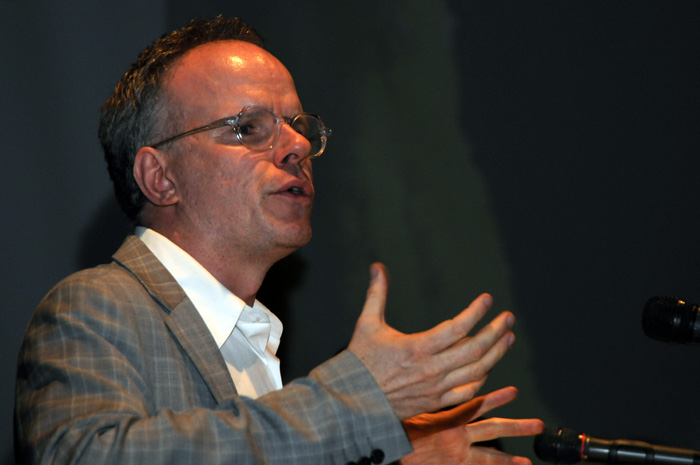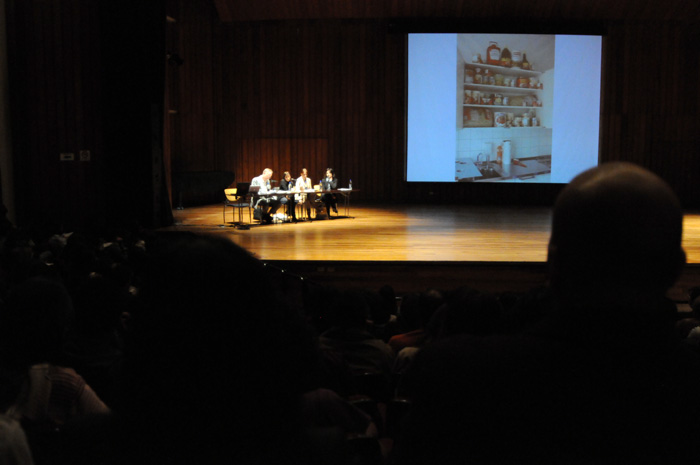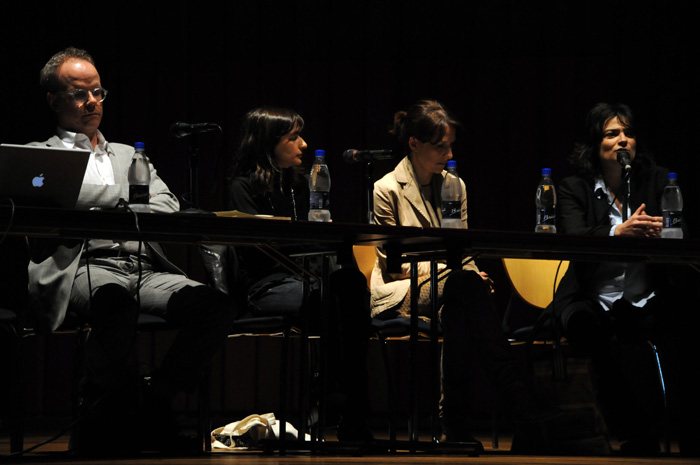With a large number of spectators, three important figures of the international art world came to Colombia to talk about the characteristics the 21st century museums should have. Hans Ulrich Obrist, Co-director at the Serpentine Gallery in London; Tanya Barson, curator of the Tate Modern; and Mari Inés Rodriguez, curator of the Museo de Arte Contemporáneo in Castilla y León, MUSAC in Spain, visited the country.
Ulrich said the 21st century museum should combine many expression possibilities; it should represent a consensus between the city and the museum, and attract people.
"Museums are labs, time capsules, and in many occasions, routine is the main problem of these institutions," Said Ulrich. "We have to change museums into new institutions every year, with different elements, not only in infrastructure, but also in artistic ideas," he said.
The art expert frequently recommended that in order to socialize art effectively, the best option is to establish a hybrid methodology between conferences and exhibitions.
For Ulrich, the future of museums should have different experiments in which people participate. "If the conception of art changes, these places have to change too, not entirely, but they have to be opened to new conceptions. The 21st century Museums have to protest against obscurity.
"Exhibitions in houses of art are very interesting and produce different and pleasant experiences; for instance, the museum in Federico Garcia Lorca"s house in Spain," said Ulrich, who is considered to be one of the most influential people in the world of art.
For her part, Mari Inés Rodriguez, curator of the MUSAC, explained that museums are places where ideas can be in movement." It is important that people generate their own ideas for these institutions, which are not only for exhibitions"
No matter if museums are big or small, permanent communities to work have to be created so when artistic projects come to their end, the groups continue working in a new proposal, said Rodriguez.
Tanya Barson, from Tate Modern, finished this conference with a story about the emergence process of this important British museum that, according to her words, has change the way art is conceived in her country.
This event was coordinated by the Directorate of Cultural Diffusion in Universidad Nacional de Colombia and Colombia es Pasión.
 Correo Electrónico
Correo Electrónico
 DNINFOA - SIA
DNINFOA - SIA
 Bibliotecas
Bibliotecas
 Convocatorias
Convocatorias
 Identidad UNAL
Identidad UNAL





